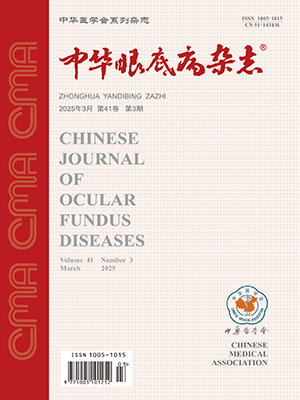Objective To observe the effect of scanning laser ophthalmoscope (SLO) measuring macular light sensibility on evaluating the visual function in idiopathic epiretinal membrane (IERM), and analyze the relationship among the macular light sensibility, central visual acuity, and the thickness of fovea. Methods Procedure of microperimetry of SLO was performed on 44 patients (55 eyes) with IERM diagnosed by indirect and direct ophthalmoscope and optical coherence tomography (OCT). The light sensibility at 10 deg;macular central area was measured. The results were compared with 31 healthy control eyes which underwent the same examinations simutaneously. The correlation among the macular light sensibility, the thickness of fovea measured by OCT, and the results of logarithm visual acuity was anaylzed. Results Compared with the control eyes, macular light sensibility decreased in IERM eyes significantly (F=47.265, P lt;0.01), which had the positive correlation with the decrease of visual acuity (r=0.687, P=0.000) and negative correlation with the retinal thickness of macular fovea (r=-0.532,P=0.003). The mean macular light sensitivity in patients with metamorphopsia decreased obviously compared with which in patients without (t=7.039, P=0.000). The mean macular light sensitivity in patients with prolifertive IERM decreased compared with which in patients with dropsical IERM without statistical difference (t=-1.706, P=0.094). Conclusion Microperimetry of SLO may sensitively reflect the macular visual function of eyes with IERM and quantificationally evaluate the changes of macular light sensibility. The changes of macular light sensitivity correlates with the central visual acuity and retinal thickness of macular fovea. (Chin J Ocul Fundus Dis, 2006, 22: 100-102)
Citation: LU Yingyi,DAI Hong,XIA Qun,et al. Macular light sensibility in idiopathic epiretinal membrane measured by scanning laser ophthalmoscope. Chinese Journal of Ocular Fundus Diseases, 2006, 22(2): 100-102. doi: Copy
Copyright © the editorial department of Chinese Journal of Ocular Fundus Diseases of West China Medical Publisher. All rights reserved




